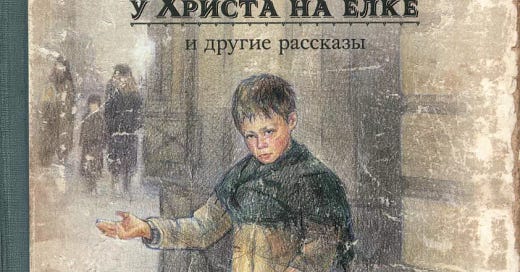Hey hey!
My first conscious reading of Dostoevsky's novels didn't happen in school but after graduation. Little did I know when I was a school student that his texts would significantly change my mind. You should forgive Raskonikov instead of wishing death on him. You should pity Nastasya Filippovna instead of having haphephobia-like feeling. These two choices are comparatively simple. Give yourself a bit of faith, have self-worth and only then you have a courage to be vulnerable to others. Why do you need it? Because that what shapes your dignity. Love. The scariest thing is to lay yourself bare towards one another. We forget how to trust. It is easier to live life alone. But it is not. Fyodor Mikhailovich brilliantly showcased it.
In the last days of December, I would like to gather together and discuss one short novel written by Fyodor Dostoevsky. I want to share with you the details that we, contemporary readers, no longer see. I'm willing to share with you the idea of the two-fold image and philosophy of personality in the writer's works.
I will use the text “The Beggar Boy at Christ’s Christmas Tree” that will help to see the depth of Dostoevsky's thought. I will share with you what we are supposed to read in fact. For instance, in “Crime and Punishment” we read a description of Sonya's room:
“A wall with three windows looking out on to the canal ran aslant so that one corner formed a very acute angle, and it was difficult to see in it without very strong light. The other corner was disproportionately obtuse.”
Dostoevsky made her low-pitched room looking like a sickle-shaped room. Other symbols give us the idea of her as a female representation of God. She was betrayed and yet she continued loving every one. What are the hidden symbols in the text? Most probably you see it, after our online meeting.
If you want to enhance your comprehension and derive enjoyment in a text, write me away here on Substack or Telegram < @lunerayo >
NB. December, 27th, 8PM (Moscow time)




